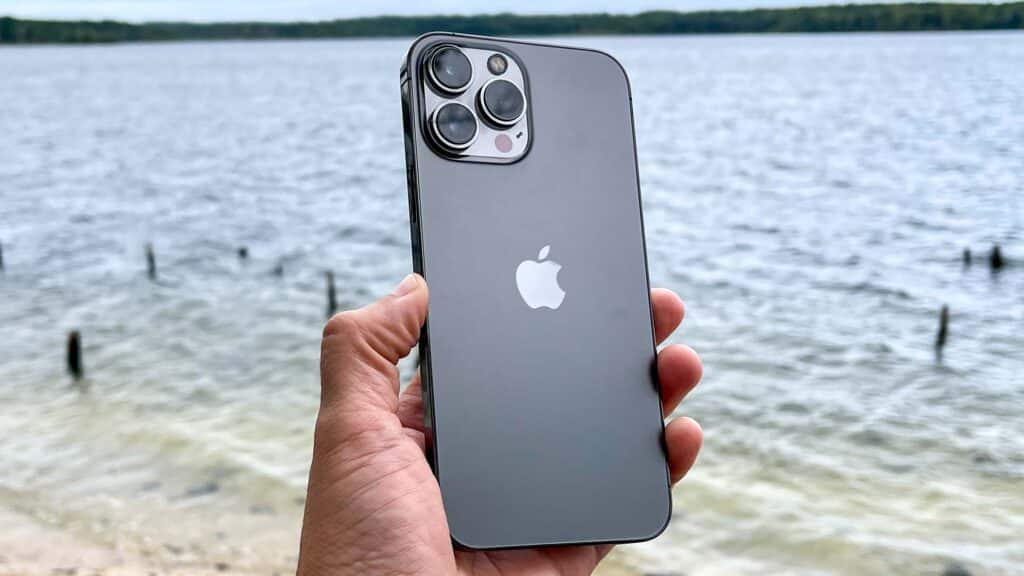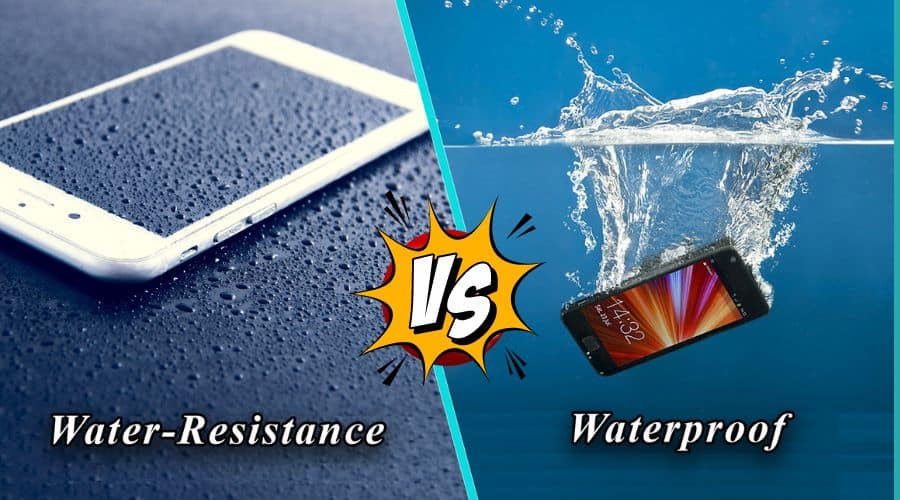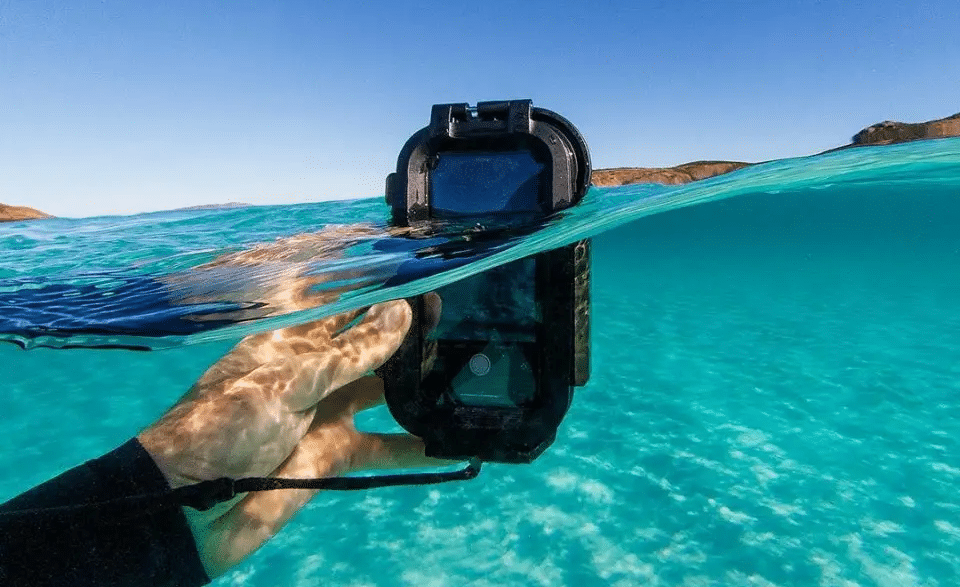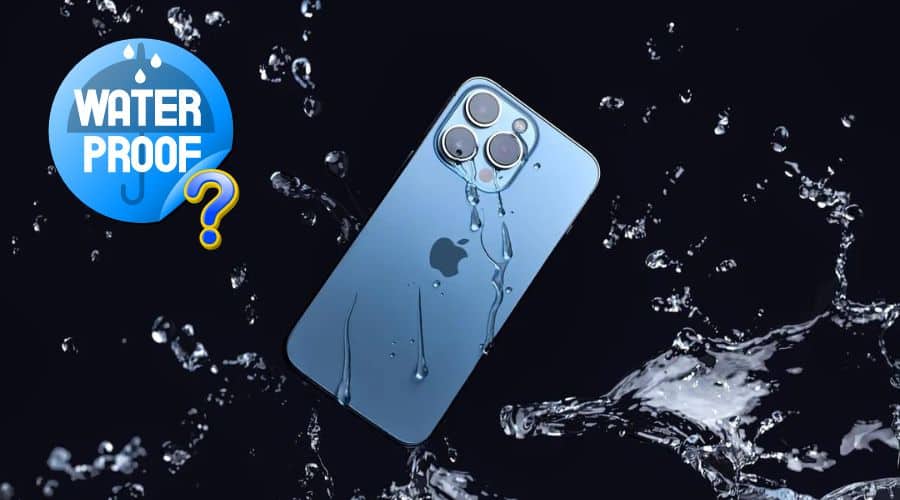Is the iPhone 13 Pro Max truly waterproof? Uncover its impressive water-resistant features, limitations, and care tips in this article to ensure optimal device protection. The iPhone 13 Pro Max continues Apple's commitment to creating durable, water-resistant devices. With an IP68 rating, this phone offers users a higher level of protection against splashes and spills. The question of its waterproof capability often arises among users curious about the extent of its resilience to water exposure.
This article delves into the iPhone 13 Pro Max's water resistance, addressing common queries about its waterproofing features. From everyday scenarios like accidental splashes to more intentional exposures, such as taking the phone into pools or encountering rain, users want to know how well this device can withstand water.
So, if you are wondering about the iPhone 13 Pro Max's waterproofing abilities, this article is your comprehensive guide. It covers what the IP68 rating entails, how water-resistant the phone is, and essential steps to take if your device gets wet.
Is my iPhone 13 Pro Max Waterproof?

The iPhone 13 Pro Max is water-resistant but not waterproof. Apple has consistently improved water resistance across its iPhone models, and the iPhone 13 maintains this trend with an IP68 rating. This implies it can handle being underwater at a depth of 1.5 meters for 30 minutes without damage.
Despite instances of users using it underwater, it is important to understand the distinction between water-resistant and waterproof. If complete waterproofing is desired, third-party waterproof cases might be necessary.
The IP68 rating across the iPhone 13 lineup ensures a certain level of protection against water, distinguishing it from being completely waterproof.
IP68 Rating
The IP68 rating is Apple's pinnacle of water resistance for its iPhones, ensuring remarkable durability against water damage. For the iPhone 13 Pro Max, this rating signifies an impressive capability to withstand immersion in water up to 1.5 meters deep for 30 minutes without any adverse effects.
Unlike earlier models, this enhanced water resistance allows users to confidently take their phones to the beach or pool without fear of damage. While the base model iPhone 13 also boasts an IP68 rating, users need to note that this level of water resistance specifically applies to freshwater scenarios. Opting for a more waterproof model might be advisable for ocean or saltwater activities.
Difference Between Water-Resistant and Waterproof

The distinction between “waterproof” and “water-resistant” is crucial when evaluating a device's capability to withstand water exposure. Unlike water-resistant, a waterproof device can endure being submerged in water indefinitely without sustaining damage. No major smartphones, including the iPhone 13 Pro Max, fit this category.
Conversely, a water-resistant smartphone, such as the iPhone 13, can withstand water under specific conditions defined by its rating, like depth and duration of submersion, recommended temperatures, and other specified parameters. It is resilient against occasional exposure to water, like rain or accidental splashes, but it is not designed for prolonged submersion or extreme water environments like swimming pools or oceans. The distinction lies in the limitations of how much and for how long the device can endure water exposure without being damaged.
What Happens When You Sub Merge an iPhone 13Pro Max in Salty Water?
Submerging an iPhone 13, or any iPhone for that matter, in salty water like the ocean can cause damage due to the corrosive nature of saltwater. While the iPhone 13 is water-resistant and equipped with an IP68 rating, which protects freshwater, it is important to note that saltwater can be more damaging.
Saltwater contains minerals and salts that can corrode electronic components and leave residue, potentially causing malfunctions or damage to the device. Despite the phone's water resistance, prolonged exposure to saltwater can compromise the seals and protective layers, making it vulnerable to damage.
If an iPhone 13 is submerged in saltwater, immediate steps should be taken to remove it, rinse it gently with fresh water (if possible), and ensure it is thoroughly dried before attempting to use or charge it. However, even with these precautions, there is a risk of lasting damage, so it is advisable to avoid exposing the iPhone 13 or any electronic device to saltwater whenever possible.
How about Taking Pictures Under Water?

While the iPhone 13 Pro Max is equipped with a robust, water-resistant design, using it for underwater photography without added protection could pose risks. Its water resistance is primarily intended for accidental immersion, not extended or deliberate use underwater. Therefore, relying solely on its inherent water resistance for underwater photography might compromise the device's functionality over time.
Investing in a specialized waterproof case, as is using the iPhone 13 Pro Max for underwater photography in aquatic environments like snorkeling, is advisable. Such cases provide an additional layer of protection against moisture, safeguarding the device from potential damage caused by prolonged exposure to water.
With the right waterproof case, the iPhone 13 Pro Max can take pictures underwater, but it is essential to choose a case that provides the level of protection necessary for specific underwater conditions. A simple plastic case might suffice for shallow water, but for more intense or prolonged use, heavier-duty cases with fully waterproof seals or additional lens attachments offer better protection for capturing underwater moments without risking damage to the device.
What to do If You Accidentally Drop your iPhone 13 Pro Max in Water?
If your iPhone 13 Pro Max accidentally falls into the water, acting quickly to minimize potential damage is crucial. Despite its water-resistant capabilities, immediate retrieval and proper care are essential. Here are the steps to take if you accidentally drop your iPhone 13 Pro Max in water:
- Remove it from the water as quickly as possible. The longer your phone stays submerged, the higher the risk of damage.
- Turn off the device immediately to prevent short circuits or potential damage caused by electrical currents.
- Use a clean, dry cloth to thoroughly wipe the phone's exterior. Pay attention to ports, speakers, and buttons to remove excess water.
- Avoid plugging the phone in for charging to prevent potential electrical damage. The charging port might still have moisture, so stop charging until it is completely dry. Do not use a hairdryer or apply heat to dry the phone. Heat can damage internal components.
- Allow the iPhone to air-dry naturally for at least 24-48 hours before attempting to power it on.
- If the device does not function properly after drying, contact Apple Support or visit an authorized service provider for further assessment and repairs.
Care Tips and Precautions
The iPhone 13 Pro Max's impressive IP68 rating ensures significant water and dust resistance, but maintaining this protection requires proper care. While accidental exposure won't likely harm it, extended submersion is not advisable. Invest in waterproof cases for specific activities like water sports to safeguard your device. After any water exposure, thorough drying and port inspection before charging are vital to prevent damage.
Remember, Apple's warranty does not cover water damage, emphasizing the importance of caution. For further reassurance post-water exposure, seeking assistance from an Apple Genius Bar or the official support website is prudent. Proactive care preserves the iPhone 13 Pro Max's durability and reliability in various environments.
FAQs
Q. Can I take my iPhone 13 Pro Max to the beach?
Taking your iPhone 13 Pro Max to the beach is generally safe, but avoid exposing it to sand or saltwater for extended periods. Rinse off any salt or sand residue if it comes into contact with the device.
Q. Is the iPhone 13 Pro Max resistant to other liquids besides water?
The water resistance of the iPhone 13 Pro Max primarily applies to freshwater. Exposure to other liquids, especially those with chemicals, might damage the device.
Q. Can I use an iPhone 13 Pro Max in a hot tub or sauna?
Avoid using your iPhone 13 Pro Max in environments with extreme temperatures or high-pressure water, such as hot tubs or saunas, as these conditions can exceed its water-resistant capabilities.
Q. Should I test the water resistance of my iPhone 13 Pro Max?
It is not advisable to intentionally test the water resistance by submerging the phone. The IP68 rating is designed to protect against accidental water exposure, not as a guarantee for deliberate submersion.
Q. Can I take my iPhone 13 Pro Max swimming?
While it is water-resistant and can handle accidental splashes or brief immersion, taking it swimming or submerging it for extended periods is not recommended.
Q. Can I use an iPhone 13 Pro Max in the rain?
Yes, the iPhone 13 Pro Max's water resistance allows it to withstand rain or accidental exposure to water without significant damage.
Conclusion
The iPhone 13 Pro Max boasts a commendable IP68 rating for water resistance, safeguarding against accidental water exposure in daily scenarios. However, it is essential to recognize that it is water-resistant, not entirely waterproof. Its capability to withstand specific water depths and durations highlights its resilience but does not permit prolonged submersion or use underwater. Employing caution, using waterproof cases when needed, and ensuring proper care after water exposure is key to preserving its functionality. Understanding its limitations is crucial in maintaining the iPhone 13 Pro Max's durability, making it a reliable device for everyday use.

